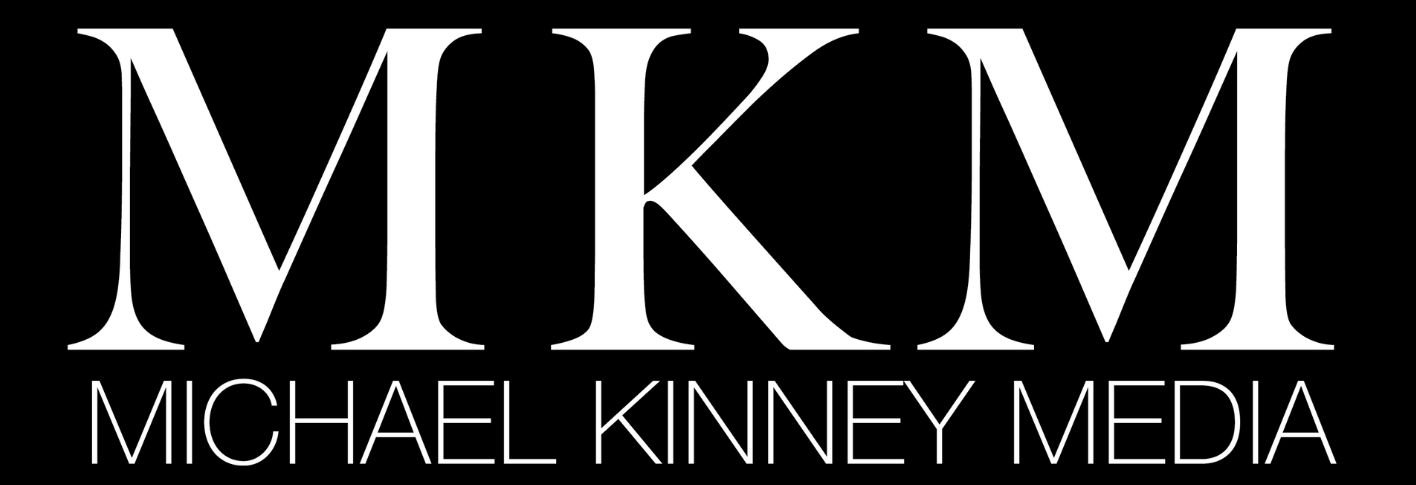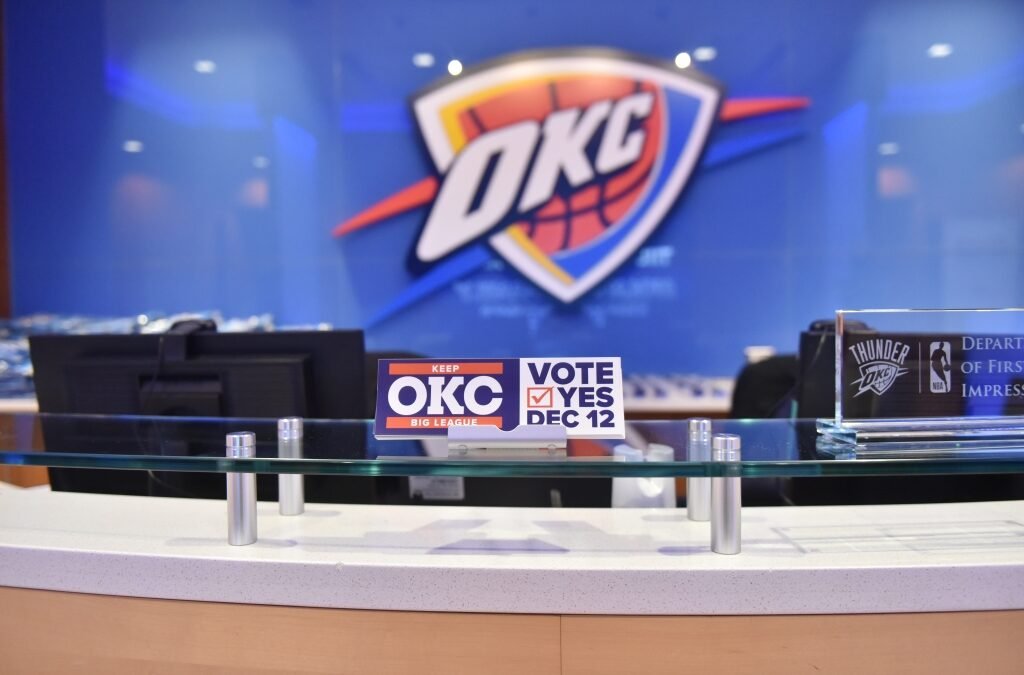By Michael Kinney
Muhammed Ali vs Jerry Cooney. The 1985 Chicago Bears vs the New England Patriots. Cotton vs Polyester. NSYNC vs 98 Degrees.
These are some of the most lopsided battles in the history of competition. Everyone knew they were going to be ugly from the start and that is the way they ended.
A new battle is possibly on the verge of adding its name to the list of David vs Goliath matchups in which the giant actually wins is the upcoming vote on Dec. 12 when residents of Oklahoma City head to the polls to decide whether to vote yes on a temporary one-cent sales tax for the creation of a new $950 million arena for the Oklahoma City Thunder that will be primarily funded by taxpayers.
According to Paycom General Manager Chris Semrau, the vote revolves around one simple question. What type of city does Oklahoma City want to be known as?
“I think if you want to live in a community with an NBA team and if you expect the biggest artists in the best tours in the world, and if you want to experience the greatest sporting events in the country, the way for us to accomplish that for the next generation is to support a new modern event center,” said Paycom Center General Manager Semrau. “The Paycom Center has served a great purpose for the facility for over 20 years, but the competitive landscape to land major events is getting more challenging all the time with newer and more modernized venues across the country. We’re not just competing in Oklahoma for events. It is a large, regional and national effort, and that delta is growing between what Paycom Center is and the other newer elite venues in the region.”
The actual name of the Dec. 12 vote is pretty much superfluous at this point. Due to a massive marketing campaign that has enveloped the state, most people know it as the “Keep OKC Big League” vote.
The campaign, which has been spearheaded by the Keep OKC Big League committee, has featured television and social media advertisements, giant roadside billboards, economic impact studies, local ‘celebrities’ and lawn signs seemingly placed in front of every house and business throughout the city and surrounding counties.
Conversely, those who want residents to vote no do not have the same infrastructure, excitement level or a marketing campaign to rival those in favor of the new arena. Besides going on social media, their voices have been drowned out by ever-present fears of losing the one professional team Oklahoma has.
That is one of the reasons the Keep OKC Big League vote is a historical mismatch.

Yet, even though opponents of the arena funding plan know they are at a severe disadvantage, the vocal minority still believe voters need to know they are being misled and fearmongered into purchasing someone else’s home for them.
Most of the issues stem from the fact that the owners of the Thunder franchise are offering to pay only $50 million of the $950 million price tag.
“I feel like at 95% taxpayer-funded, that’s not something that I can get behind,” said Greg Clyde. “I think there’s an opportunity cost for the city. It’s just too high at that.”
However, Donald Gies, an attorney in Oklahoma City, doesn’t necessarily see the split as unfair.
“I get the counterargument that it’s disproportional,” Gies said. “So, everybody assumes that the billionaires should pay for it because they have the money. But that’s just not the way it works. I mean, they’re giving up $50 million and they don’t have to do that. They could absolutely move the team anywhere else. So the fact that they’re not only carving out a path for us to compete, it shows that they care too. They’re willing to contribute $50 million.”
For Gies, looking at the money breakdown is short-sighted. To him, it’s not about how much the owners give or don’t give. It’s about what the lasting effect is on Oklahoma City.
“We’re all in it together. This requires the rich and this requires the normal common folk to keep the commerce going, to keep the economy going,” Gies said. “It’s a team effort, and that’s how we’re going to go to the next level is sticking together.”
Clyde is the owner of Clyde Pharmacy in Oklahoma City and also ran for state representative during the last election cycle. He sees the arena plan that has been laid out by Oklahoma City Mayor David Holt as more of a boondoggle than a fair deal for residents.
“It adds six years of tax onto the end of what we’ve already approved. Another six years onto the Maps 4 tax, and that’s something that we just haven’t done to that extent,” Clyde said. “We’ve done different projects, we’ve improved our roads and streets in Oklahoma City, extending that tax by two years. But we’ve never done it for six years unless it’s a MAPS project. A maps project includes several different projects throughout Oklahoma City. And so, this is a single project that costs more than any other Maps project combined.”
When Holt initially announced the plan for the arena in September, his main selling points were that it would not raise taxes and it would guarantee the Thunder would be in Oklahoma for the foreseeable future.
“As this very public discussion played out over the last year, the people of Oklahoma City have overwhelmingly expressed to me two desires – 1) keep the Thunder for as long as possible, and 2) don’t raise taxes if it can be avoided. We have accomplished those two priorities with this plan, and it is truly a win-win for all of us,” Holt stated in a social media post. “Perhaps the most important aspect of the deal is the length – this is twice the commitment we received in 2008 and will keep the Thunder here beyond 2050. My children will be my age when this agreement ends. For a generation, we will retain the economic impact and quality-of-life benefits we have enjoyed as a big-league City. It is an investment that pays for itself many times over.”
Gies agrees with Holt on just how important a new arena is to the city and the best way to make it happen is with Maps.
“I think just you have to stay up with the times. If you look around the league, you have a new arena in Sacramento, Golden State. It’s just necessary. And the dual purpose is, it’s an existing sales tax. So you don’t even really know the difference,” Gies said. “Yes, it extends it out, but it’s also undebatable that the maps for the sales tax is extremely beneficial to our city. So if it just shifts the cost to another purpose, and the benefit you get is you get to keep the team through 2050. It’s just like a no-brainer to me.”
Yet, according to Clyde, Holt and city leaders didn’t seem interested in getting the best deal possible for Oklahoma City. But was more focused on making sure the Thunder ownership group was happy.
“I’m a Thunder fan and I absolutely want to support the Thunder and want the Thunder to stay. I think there’s some room in the middle,” Clyde said. “A 50/50 proposition where taxpayers pay part of it and the ownership group pays the other half of it. I think that’s a better deal for the city in the long run. It’s a scare tactic that the Thunder will leave just like they did in Seattle. The circumstances of this vote are not anywhere near similar to the circumstances of the vote that they had in Seattle. The team was already on the way out the door. It was this ownership group that owned the Thunder when they voted to have a new stadium built in Seattle. And so, they wanted that to fail so that they could move the team to Oklahoma City, which we’re glad.”
Despite this, Clyde, who will cast a no vote, says he thinks residents who come out to the polls will vote yes for the arena. The overwhelming majority of the Thunder fans who walked through the Paycom turn styles said they have the same belief. Even if they are not happy with how it’s being paid for, losing the team isn’t something they want to risk.
Longtime Thunder fan Jay Thomas, who owns G 1:3 Solar and Construction in Oklahoma City, attends every home game while also traveling across the country to watch the Thunder play. He says fans have only one option.
“In my opinion, it only makes sense. Folks need to vote yes on the Dec. 12th vote not only for the Thunder to stay and have a brand-new arena, which is one of the worst arenas (Paycom) in the NBA, and I’ve been to all but eight of them,” said Thomas. “But for the economic advantages the Thunder give the OKC area, the concerts and shows that will continue to come to OKC.”
For Thomas, who remembers what the area was like before getting an NBA team, the thought of going back to that era is more than enough reason to cast a yes vote.
“Lots of the people who are against it don’t realize it just continues a tax we’ve had in place for years. OKC is growing and becoming a destination for people when it used to not be. It used to be just for the occasional March Madness tournament and shows that didn’t fit the arena in Tulsa’s schedule,” said Thomas. “We’re building new things downtown and around the arena now. It will be way better once we have a new arena. I hope there are not a lot of old heads that vote against it. We need to keep OKC big league as they’re saying.”
If residents do vote yes on Dec. 12, the Thunder and the City plan to open the arena in downtown Oklahoma City in time for the 2029-2030 NBA season.
“If the vote didn’t pass, I would assume the Thunder would need to explore other options for their future,” Semrau said. “And from talking to other counterparts in various markets, there are many cities who are ready to make aggressive offers if they could secure an NBA team such as the Thunder. Oklahoma City has an opportunity to keep the team here through 2050 as well as benefit from all that a new event center has to offer, including an increase in touring events and more sporting events. It is for the Thunder, but it’s about so much more.”
If not, Semrau didn’t sugarcoat the possibilities that could await not just residents of Oklahoma City, but also the rest of the state.

IG: mkinneymedia
X (Twitter): MKinneyMedia
Youtube: Michael Kinney Media
Photos (SmugMug): Michael Kinney

